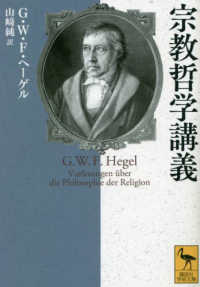Full Description
In The U.S. Presidency, E. Thomas Sullivan and Richard W. Painter examine the evolving state of presidential power in the United States, specifically facilitating discussion and debate concerning the power, responsibility, and accountability of U.S. Presidents. How is power acquired? How is it used or misused? How are the President's powers checked and how are they held accountable to and by the people? Rather than promote a single theory of presidential power, Sullivan and Painter answer these questions with a wide range of arguments for and against power in a broad number of circumstances and Supreme Court holdings. Grounded in the intersection of law, politics, and history, this book engages readers across disciplines, helping them understand the remarkable transformation of the United States presidency. Objective and timely, The U.S. Presidency makes a case for a democratic model of self-government centered on accountability and the rule of law.
Contents
Acknowledgements; Introduction; Part I. Presidential Power: 1. The vesting of executive power; 2. The president and the administrative state; 3. The president as commander in chief; 4. The president at home: the president and congress; 5. Presidential pardons: for others and self?; 6. Presidential emergency powers; 7. Other presidential powers; 8. The president and the alien enemies act; 9. Does the president have the power to void birthright citizenship?; Part I. Conclusion: Part II. Responsibility: 10. Responsibility and duty under the 'Take Care' clause; 11. Financial and political conflicts of interests of the president; 12. Corruption in the presidency; 13. Taking care of federal lands; Part II. Conclusion: Part III. Accountability: 14. Impeaching the president; 15. Suing the president; 16. Prosecuting the president; 17. Investigating the president; 18. Presidential term limits; Part III. Conclusion: Epilogue.








